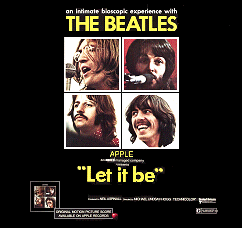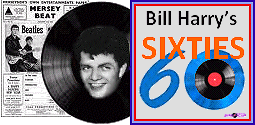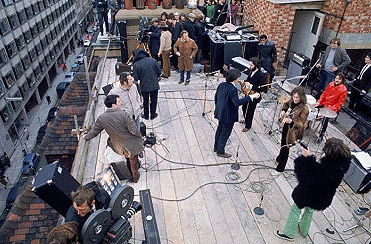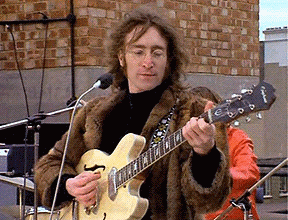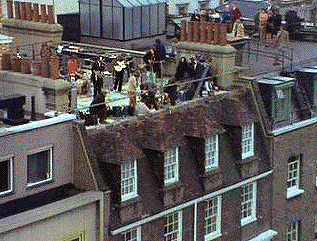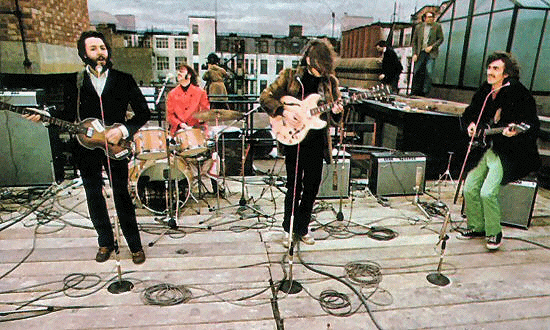 |
There
are 22 numbers featured in the film, most of them performed during the
studio recording. The boys are seen playing, talking, eating, relaxing;
the various people who appear in the film include Billy Preston, Derek
Taylor, Yoko Ono, Mal Evans, Michael Lindsay-Hogg, Heather McCartney
and George Martin.
The Twickenham Studio setting is featured for approximately an hour’s
screen time and the film’s most exciting moment is when the Beatles
emerge onto the Apple roof, overlooking Burlington Gardens.
There are edited sequences of the 40 minutes they spent on the windswept
roof, including the entry of the police and comments from people in
the crowds that gathered in the streets below. One man, obviously incapable
of appreciating that the fun of life needn’t be restricted to outside
business hours, comments: “This kind of music is very good in its place,
but it’s a bit of an imposition when it disrupts all the business in
the area".
The Beatles conversations inside the studio cover various topics, but
at several points tempers appear frayed. George in particular, seems
annoyed at various points, specifically when Paul explains how he wants
a guitar line played. |
